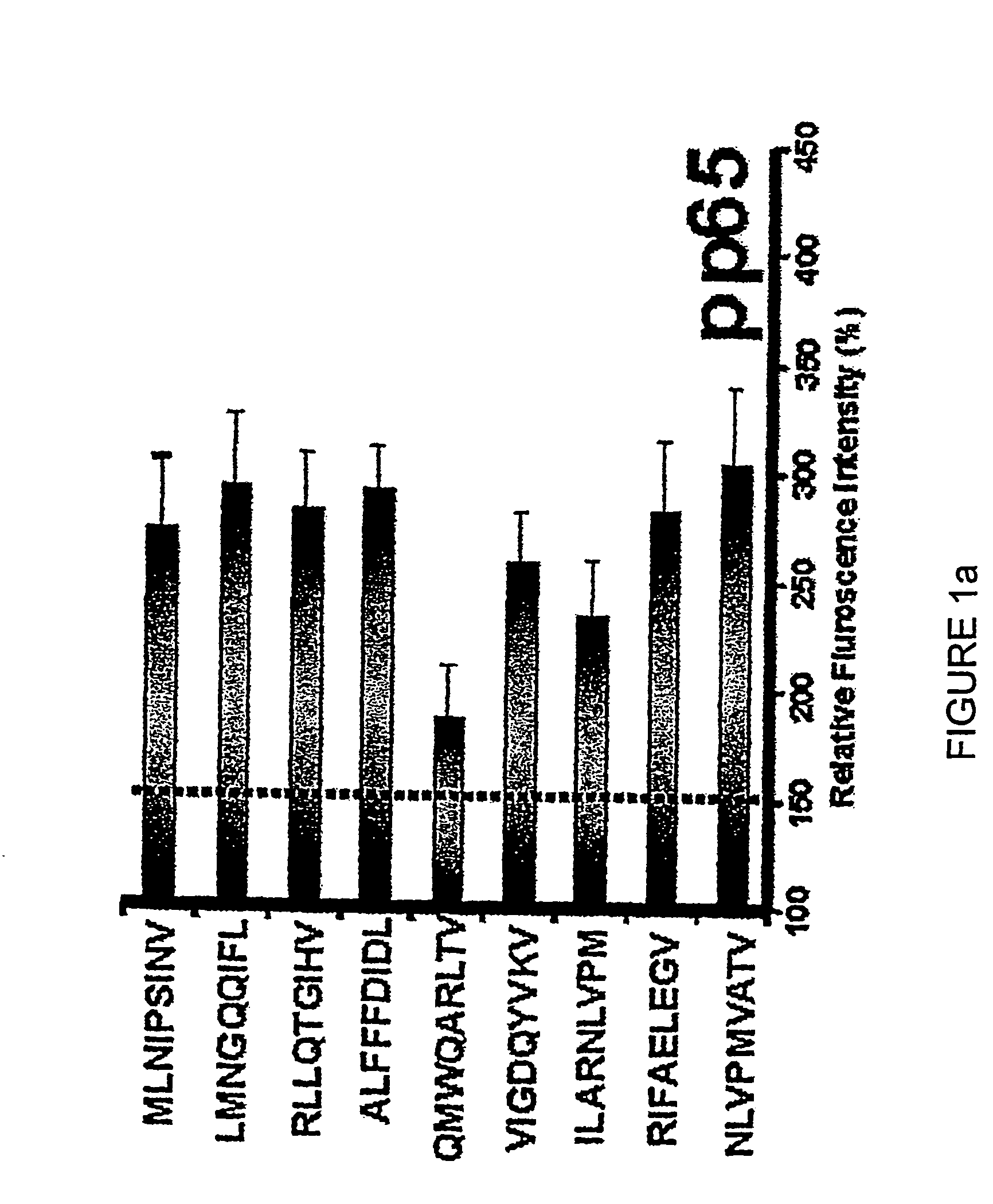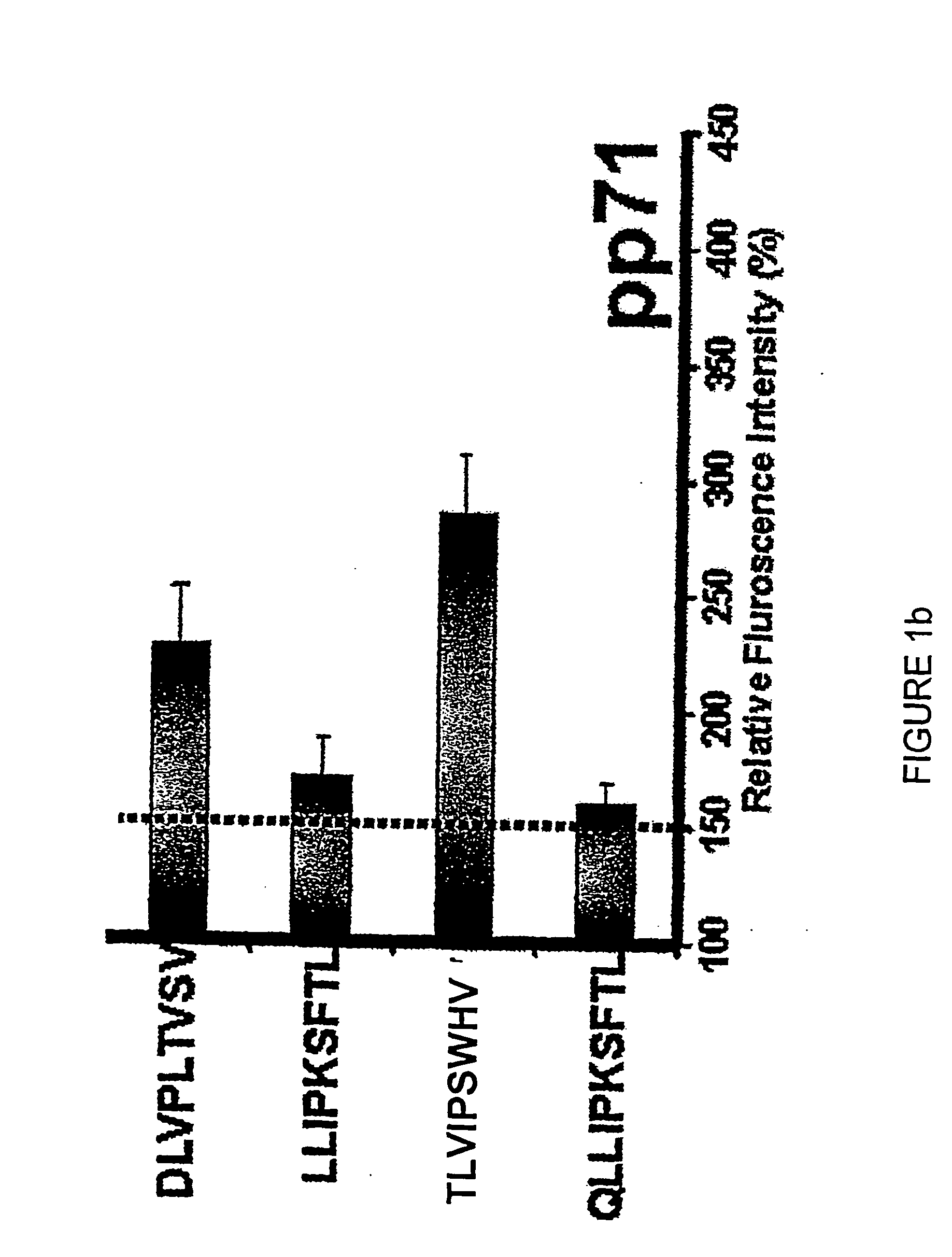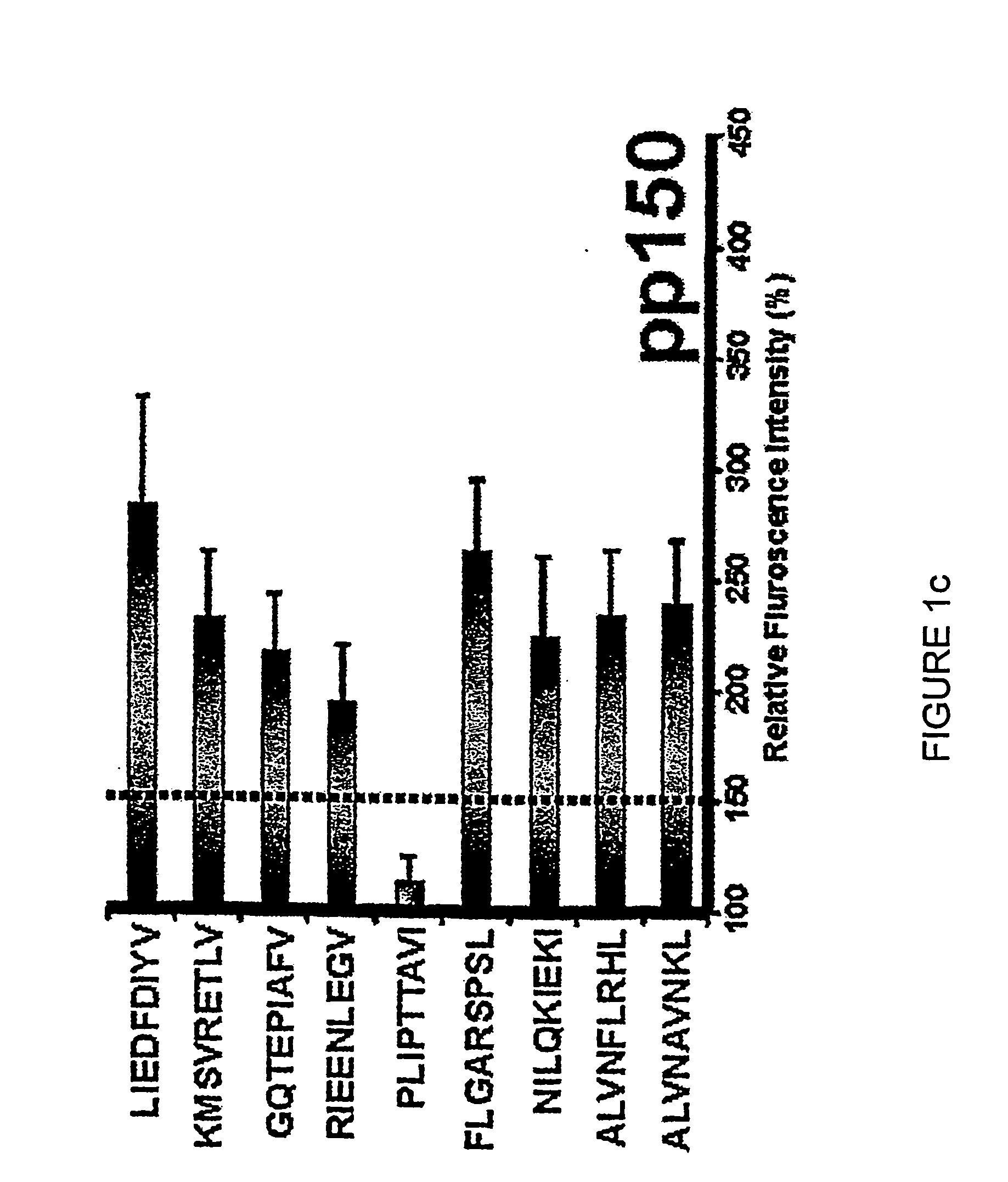Novel human cytomegalovirus (hcmv) cytotoxic t cell epitopes, polyepitopes compositions comprising same and diagnostic and prophylactic and therapeutic uses therefor
a technology of human cytomegalovirus and t cell epitope, which is applied in the field of hcmv cytotoxic t cell epitope, polyepitopes compositions comprising same, can solve the problems of limited protection of vaccinated normal volunteers from viral challenge using hcmv, significant morbidity and mortality, and the likelihood of presenting a number of limitations in vaccine formulations based on one or more full-length hcmv
- Summary
- Abstract
- Description
- Claims
- Application Information
AI Technical Summary
Benefits of technology
Problems solved by technology
Method used
Image
Examples
example 1
Materials and Methods
[0334] 1. Establishment and Maintenance of Cell Lines
[0335] Epstein Barr virus-transformed lymphoblastoid cell lines (LCLs) were established from HCMV seropositive donors by exogenous virus transformation of peripheral B cells using the B95.8 (Klein et al., Intervirology 3, 232-244, 1974) and QIMR-WIL (Pope et al., Int J Cancer 4, 255-260, 1969) virus isolates. In addition, the peptide transporter (TAP)-negative B x T hybrid cell line 174×CEM.T2 (referred to as T2) (Salter et al, EMBO J. 5, 943, 1986) was used for MHC stabilization assays. All cell lines were routinely maintained in RPMI 1640 supplemented with 2 mM L-glutamine, 100 IU / ml penicillin and 100 μg / ml streptomycin plus 10% foetal calf serum (FCS) (growth medium).
[0336] To generate phytohaemagglutinin (PHA) blasts, peripheral blood mononuclear cells (PBMC) were stimulated with PHA (Commonwealth Serum Laboratories, Melbourne, Australia) and after 3 days of culture, growth medium containing MLA 144 su...
example 2
HLA class I Epitope Prediction and HLA Binding Peptides from HCMV Antigens
[0355] HLA class I-restricted CTL epitopes were identified using two computer-based algorithms as described in Example 1. These algorithms predict 8, 9 or 10-mer amino acid sequences that are likely to bind successfully to MHC class I molecules (HLA A1, A2, A3, A24, A26, B7, B8, B27, B35 and B44) based on the half-time dissociation of the interaction. Peptides that ranked higher than 24 in the SYFPEITHI program and / or peptides that scored greater than 100 from the BIMAS program are listed in Table 1.
[0356] The peptides listed in Table 1 were used to screen healthy, seropositive donors. All peptides predicted to bind HLA class I alleles were also analysed for their capacity to bind to HLA class I MHC molecules and stabilize their expression on the surface of T2 cells transfected with individual HLA alleles. Representative data for the HLA A2 stabilization are shown in FIGS. 1a through 1i. A summary of MHC sta...
example 3
ELISPOT Assay on HLA A2 Predictive Peptides
[0357] To determine whether memory CTL responses against the predictive HCMV potential epitopes could be detected in healthy seropositive virus carriers, we used the ELISPOT assay, which allows rapid identification of CTL epitopes without prolonged in vitro culture. PBMC isolated from a cohort of HLA A2-positive healthy virus carriers (Table 2) were stimulated with the peptides that gave a positive result in HLA binding assays (Example 2), and those cells that produced IFN-γ were detected.
[0358] Representative data on the ELISPOT assays HLA A2 binding peptides are shown in FIGS. 2a through 2c for peptides derived from HCMV pp65, IE-1, pp150, pp28, US2, US3, pp50, gB, gH, and IE-2.
[0359] Overall, the T cell responses for HLA A2-restricted epitopes in ELISPOT assays indicated an interesting hierarchy between the different antigens of HCMV. As reported by Gyulai et al, J. Infect. Dis. 181, 1537-1546, 2000, pp65 was clearly the most immunodo...
PUM
| Property | Measurement | Unit |
|---|---|---|
| diameter | aaaaa | aaaaa |
| diameters | aaaaa | aaaaa |
| diameters | aaaaa | aaaaa |
Abstract
Description
Claims
Application Information
 Login to View More
Login to View More - R&D
- Intellectual Property
- Life Sciences
- Materials
- Tech Scout
- Unparalleled Data Quality
- Higher Quality Content
- 60% Fewer Hallucinations
Browse by: Latest US Patents, China's latest patents, Technical Efficacy Thesaurus, Application Domain, Technology Topic, Popular Technical Reports.
© 2025 PatSnap. All rights reserved.Legal|Privacy policy|Modern Slavery Act Transparency Statement|Sitemap|About US| Contact US: help@patsnap.com



